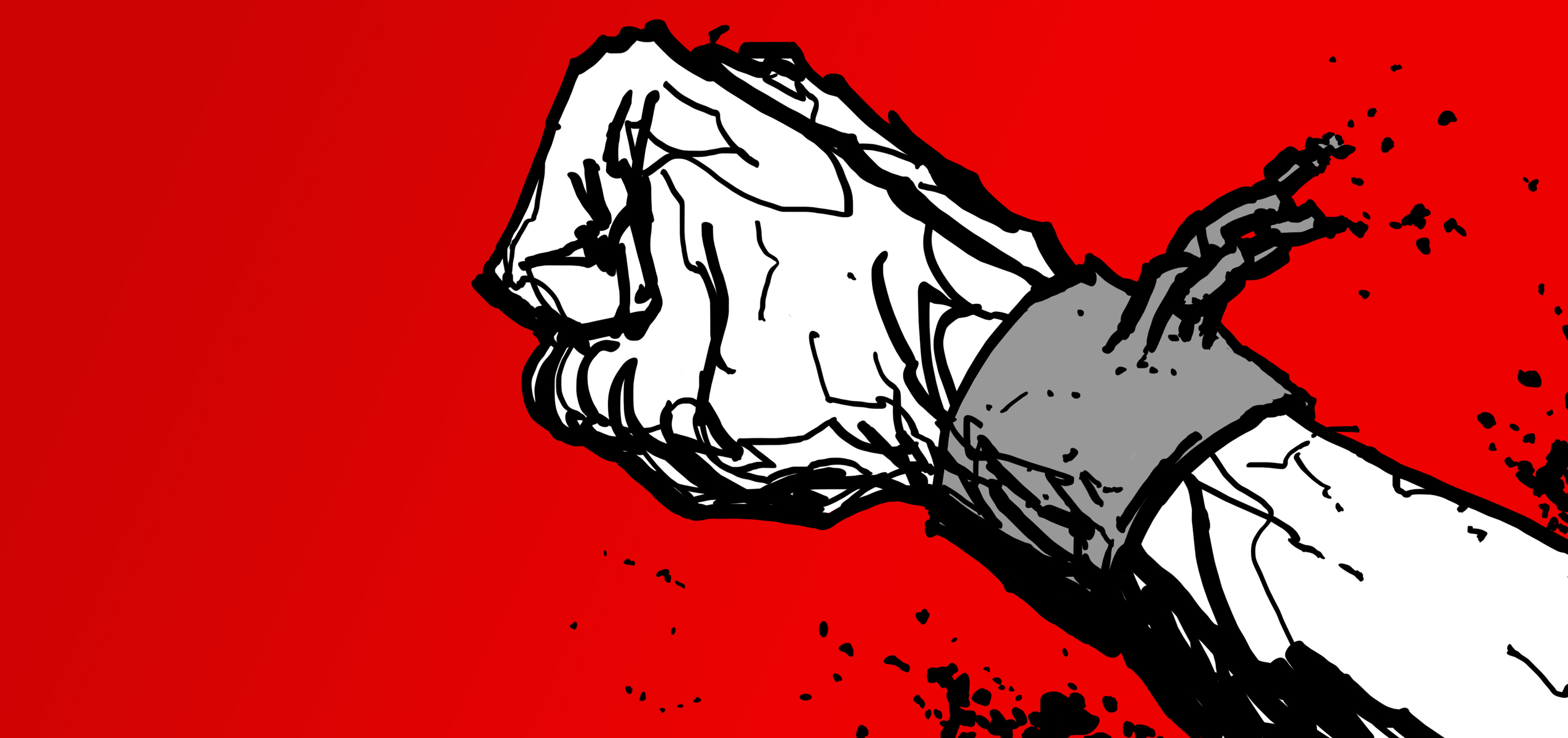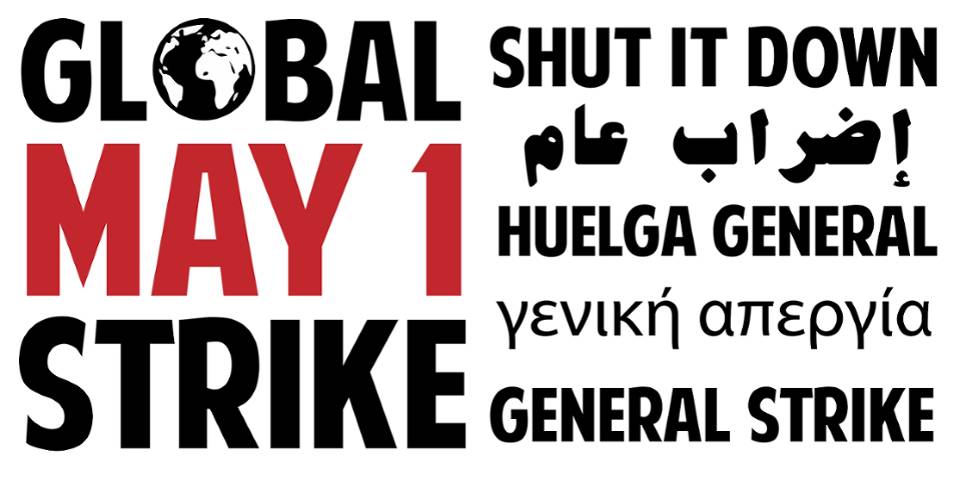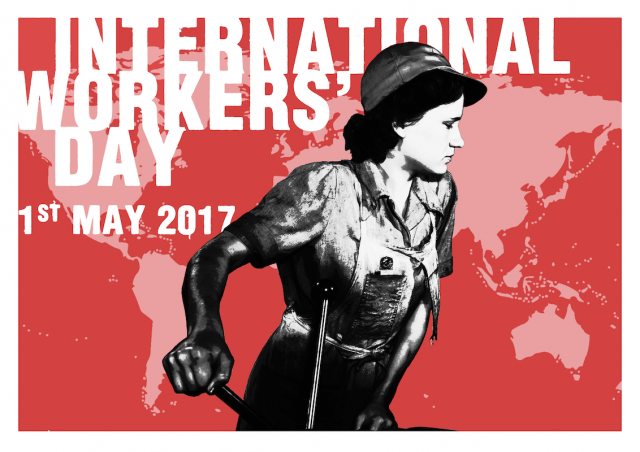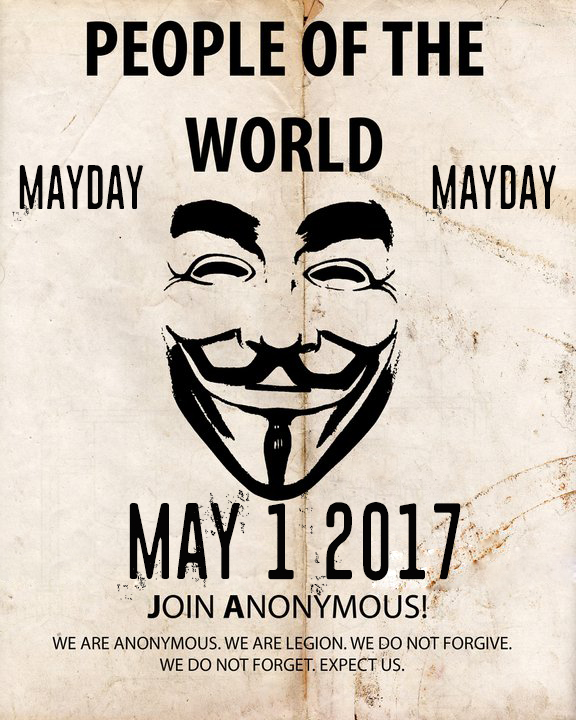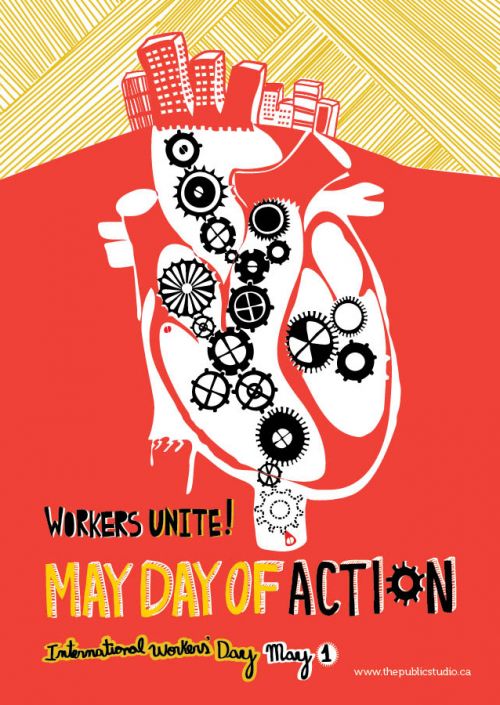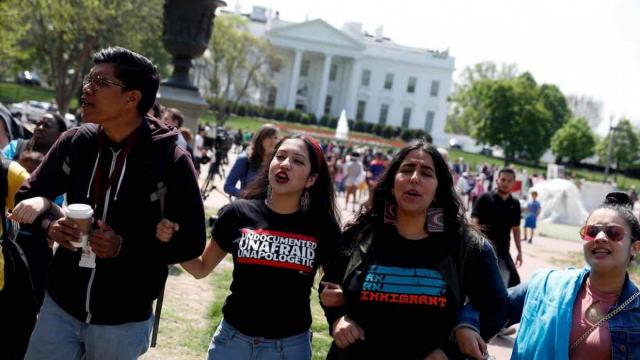
Hundreds of thousands of immigrants and their allies will be marching on the streets and striking on May Day for the annual workers’ protest. The march is expected to be the largest in years because of the activist energy galvanized by Donald Trump.
A coalition of immigration, labor, racial justice, gender equality and LGBT groups have come together for the May Day protests, which are traditionally led by unions and other labor groups.
Two days after Trump celebrates his 100th day as president, these groups plan to demonstrate as a unit against the president’s policies and rhetoric.
“You’ll see rallies, you’ll see marches, you’ll see strikes, you’ll see any number of events that at the end of the day are doing two things: either calling out Trump on his bigotry but also affirming the rights and the dignity of immigrants and refugees in this country,” said Kica Matos, director of immigrant rights and racial justice at the Center for Community Change (CCC).
CCC is a social justice organization whose work includes immigration reform. The group was a founding member of the Fair Immigration Reform Movement (Firm), which is helping coordinate at least 138 May Day events in 35 states.
May Day workers’ demonstrations have always been tied to the immigrant community because of the population’s contributions to the US economy, but this year the pro-immigrant message is being made explicit.
“The Trump administration has shown nothing but contempt for immigrants and refugees and people of color, so we really want to make sure immigrants around the country rise up and speak about the rights of immigrants and the rights of workers,” Matos said.
The May Day actions were rumored to be a reprise of the Day Without Immigrants protests in February, which saw restaurants and construction sites across the country abruptly close because of the strike. There was a similar action on 1 May 2006, when more than 1 million people participated in a protest and boycott for immigrant rights.
But this year’s May Day events vary by locality.
In Houston, people will wear red for a morning rally in the city. In Vancouver, Washington, there will be a rally and march after the work day ends.
In Arkansas, there will be a rally in the state’s capital, Little Rock, and cultural events and rallies in two cities, Rogers and Portsmouth, which have higher immigrant populations than other parts of the state.
Mireya Reith, director of Arkansas United Community Coalition (AUCC), is an organizer for the Arkansas demonstrations.
She said May Day protests have not been “a huge convener” in Arkansas, but the group is expecting a larger than usual turnout because of the energy around protests locally and nationally since Trump took office.
Thousands of people joined in the state’s women’s march in January and 2,000 people attended a heated town hall hosted by Republican senator Tom Cotton in February to question his party’s plan for healthcare, immigration and other issues.
“We think this is an opportunity to rise up in support of workers,” Reith said.
Bringing in immigrants under the May Day umbrella will be new for Arkansas, but in other parts of the country, that community has always been represented at workers’ protests.
The Las Vegas march is being organized by Culinary Union Local 226, the state’s largest immigrant organization. “We want to show solidarity between workers that are black and brown and white and LGBT,” said the union’s spokeswoman, Bethany Khan.
Khan expects a minimum of 5,000 people will participate in a march down the famous, casino-lined Las Vegas strip. She was confident the turnout for this protest would be significantly higher than in previous years. “In this climate, we’ve increasingly seen community members mobilizing,” Khan said.
The May Day protest will follow months of high-volume demonstrations in the US, including the People’s Climate March on Saturday.
Last week, the March for Science galvanized the traditionally apolitical science crowd, the Women’s March in January was one of the largest demonstrations in US history and the hastily organized Day Without Immigrants protests in February closely followed spontaneous demonstrations at US airports after the White House issued a travel ban for refugees and citizens of seven Muslim-majority countries.
3 WAYS TO SHOW YOUR SUPPORT
- Log in to post comments

